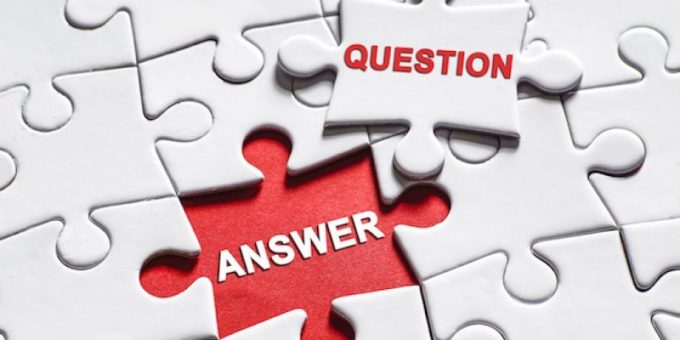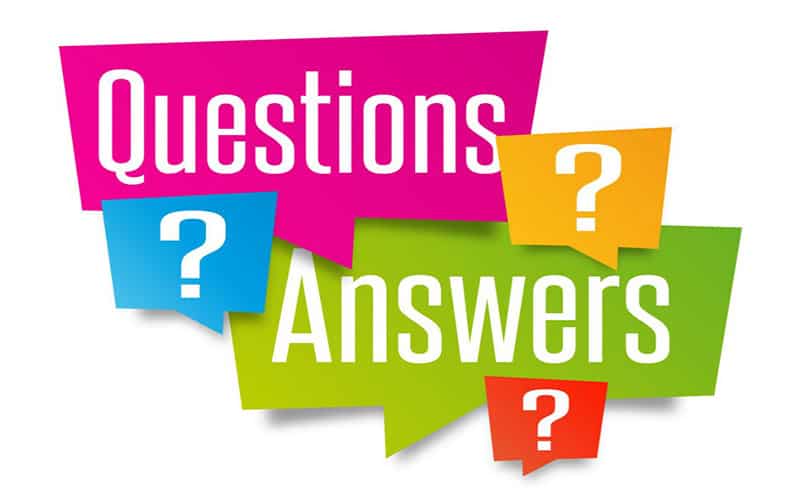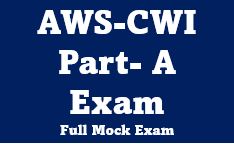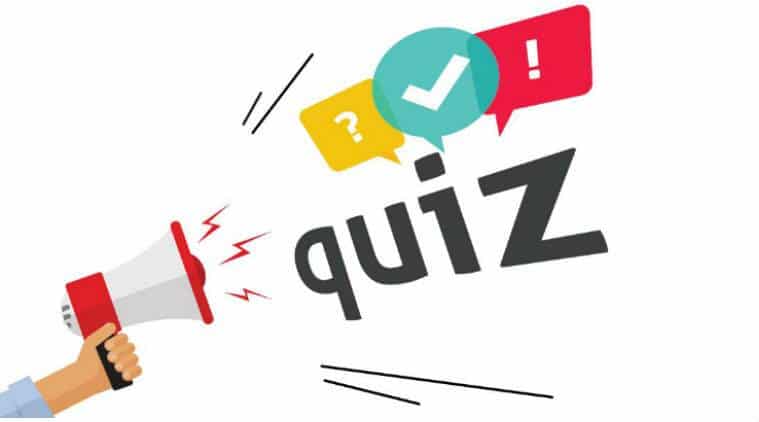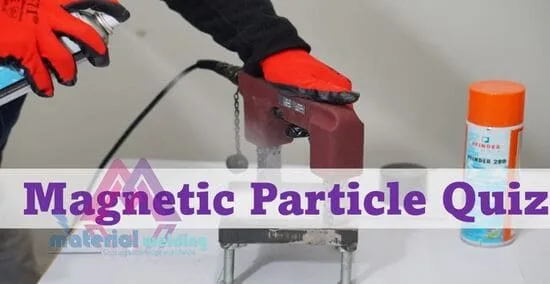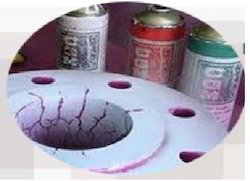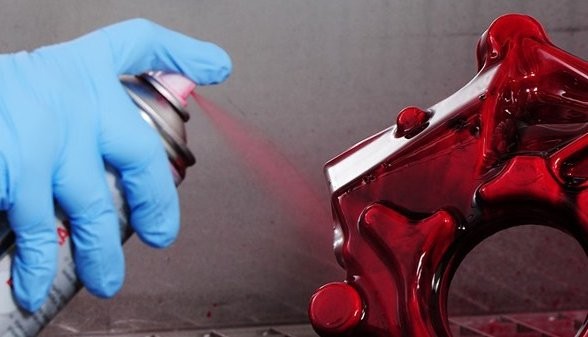ASNT NDT Level III Penetrant Testing Question-answers
Get access to 1500+ ASNT PT Level III Questions-Answers and Free Mock exams
- Which of the following defects can be detected by the penetrant testing method?
a) Cracks
b) Porosity
c) Lack of fusion
d) All of the above
Answer: d) All of the above
- Which type of penetrant is used for non-magnetic materials?
a) Water-washable
b) Post-emulsifiable
c) Solvent-removable
d) Fluorescent
Answer: d) Fluorescent
- Which parameter affects the penetrant penetrability the most?
a) Viscosity
b) Surface tension
c) Vapor pressure
d) Wetting ability
Answer: a) Viscosity
- What type of defects are difficult to detect using penetrant testing?
a) Parallel defects
b) Tight defects
c) Shallow defects
d) All of the above
Answer: d) All of the above
- Which kind of cleaning removes both soluble and insoluble contamination?
a) Mechanical cleaning
b) Solvent cleaning
c) Chemical cleaning
d) Vapor degreasing
Answer: a) Mechanical cleaning
- Which type of penetrant has the highest capillarity?
a) Hydrocarbon-based
b) Water-washable
c) Post-emulsifiable
d) Fluorescent
Answer: a) Hydrocarbon-based
- Tramp oil and grease contamination can be removed using:
a) alkali cleaners
b) organic solvents
c) emulsion cleaners
d) all of the above
Answer: d) all of the above
- Which penetrant has lowest toxicity and is least harmful to the environment?
a) Fluorescent
b) Post emulsifiable
c) Water washable
d) Hydrocarbon
Answer: c) Water washable
- Dwell time is the time between ______ and ______.
a) Penetrant application, remover application
b) Penetrant application, excess penetrant removal
c) Part cleaning, penetrant application
d) Remover application, part drying
Answer: b) Penetrant application, excess penetrant removal
- Which cleaning method removes both watersoluble and oil-soluble contaminants?
a) Solvent cleaning
b) Aqueous cleaning
c) Vapor degreasing
d) Emulsion cleaning
Answer: d) Emulsion cleaning
- Level III penetrant testing requires certification according to which of these standards?
a) ASME
b) ISO 9712
c) ASTM
d) All of the above
Answer: d) All of the above
- Which exposure method gives the highest sensitivity?
a) Forward lighting
b) Reverse lighting
c) Translighting
d) Diffused lighting
Answer: a) Forward lighting
- Which cleaning method can remove hard water marks?
a) Mechanical
b) Solvent
c) Chemical
d) Vapor
Answer: c) Chemical
- Preheat temperature may be required to ______ penetrant penetrability.
a) Increase
b) Decrease
c) Not affect
d) Improve
Answer: b) Decrease
- The two main functions of a remover are to _______ and ______ excess penetrant.
a) Emulsify, deactivate
b) Disperse, deactivate
c) Remove, deactivate
d) Emulsify, remove
Answer: d) Emulsify, remove
- Which exposure method gives the least amount of background noise?
a) Reverse lighting
b) Forward lighting
c) Diffused lighting
d) Translighting
Answer: c) Diffused lighting
- Stop action emulsifiers work by _______ the emulsification process.
a) Inhibiting
b) Accelerating
c) Halting
d) None of the above
Answer: c) Halting
- What type of penetrant system is non-destructive and reusable?
a) Post emulsifiable
b) Solvent removable
c) Water washable
d) Fluorescent
Answer: a) Post emulsifiable
- What view angle provides the highest sensitivity for penetrant inspection?
a) 0°
b) 30°
c) 90°
d) 150°
Answer: d) 150°
- Which parameter affects penetrant capillarity the most?
a) Surface tension
b) Viscosity
c) Vapor pressure
d) Wetting ability
Answer: b) Viscosity
- Chemical cleaning is done with ______ to remove oil, grease and other contaminants.
a) Acids and bases
b) Solvents
c) Surfactants
d) Abrasives
Answer: a) Acids and bases
- Post-emulsifiable penetrants function by _________ the emulsifier.
a) Activating
b) Neutralizing
c) Deactivating
d) Emulsifying
Answer: c) Deactivating
- Which exposure method results in the least legibility of indications?
a) Reverse Lighting
b) Forward lighting
c) Diffused lighting
d) Transparent lighting
Answer: c) Diffused lighting
- The major disadvantage of aqueous cleaners is that they _____ non-ferrous metals.
a) Corrode
b) Rust
c) Etch
d) Tarnish
Answer: a) Corrode
- Which process removes both water-soluble and oil-soluble contaminants?
a) Aqueous cleaning
b) Vapor degreasing
c) Emulsion cleaning
d) Solvent cleaning
Answer: c) Emulsion cleaning
- Visual acuity is improved by using:
a) Magnifying lenses
b) Loupes
c) Inspection mirrors
d) All of the above
Answer: d) All of the above
- Which type of cleaning improves part dryness?
a) Aqueous
b) Solvent
c) Emulsion
d) Vapor
Answer: d) Vapor
- Heat accelerates the penetrant by:
a) Reducing surface tension
b) Increasing capillarity
c) Lowering viscosity
d) All of the above
Answer: d) All of the above
- Which type of remover causes the least amount of part contamination?
a) Solvent-based
b) Emulsifiable
c) Water-washable
d) Post-emulsifiable
Answer: c) Water-washable
- Which penetrant has the greatest depth of penetration?
a) Fluorescent
b) Post-emulsifiable
c) Hydrocarbon-based
d) Water-washable
Answer: c) Hydrocarbon-based
- Which exposure method provides maximum flaw contrast?
a) Diffused
b) Reverse
c) Standard
d) Transparent
Answer: b) Reverse
- Which type of penetrant has highest capillarity?
a) Post-emulsifiable
b) Fluorescent
c) Water washable
d) Hydrocarbon
Answer: d) Hydrocarbon
- Materials with
a) High surface tension and high viscosity resist capillary action the most.
b) Low surface tension and low viscosity resist capillary action the most.
c) High surface tension and low viscosity resist capillary action the most.
d) Low surface tension and high viscosity resist capillary action the most.
Answer: a) High surface tension and high viscosity resist capillary action the most.
- Which type of solvent contains ozone depleting chemicals?
a) Trichloroethylene
b) Perchloroethylene
c) 1,1,1- Trichloroethane
d) Hydrocarbon solvents
Answer: b) Perchloroethylene
- What condition do all penetrants need to exhibit for effective flaw detection?
a) Spreadability
b) Penetrability
c) Retentivity
d) All of the above
Answer: d) All of the above
- Bleed-out occurs when excess penetrant _________.
a) Flows out of surface openings and cracks after removal
b) Is not completely removed before developer application
c) Is absorbed into the part material
d) Remains on the surface after removal
Answer: a) Flows out of surface openings and cracks after removal
- Acids and bases work by chemically reacting with metal ___________ to break them down.
a) Compounds
b) Residues
c) Salts
d) All of the above
Answer: d) All of the above
- Which solvent is recommended for removing water-based penetrants?
a) Perchloroethylene
b) MEK
c) Acetone
d) Isopropyl alcohol
Answer: d) Isopropyl alcohol
- which type of solvent Should not be used for post-cleaning of parts?
a) Trichloroethylene
b) Chlorinated solvents
c) 1,1,1 – Trichloroethane
d) MEK
Answer: b) Chlorinated solvents
- Which type of cleaners leave behind residues that can reduce penetrant performance?
a) Aqueous
b) solvent
c) Emulsion
d) Vapor
Answer: b) Solvent
- Which kind of cleaning removes water-soluble contaminants?
a) Aqueous
b) Solvent
c) Emulsion
d) Vapor
Answer: a) Aqueous
- Which type of cleaners are most environmentally friendly?
a) Solvent
b) Aqueous
c) Emulsion
d) Vapor
Answer: b) Aqueous
- Which lighting method provides optimum spread of penetrant?
a) Reverse
b) Diffused
c) Standard
d) Transparent
Answer: b) Diffused
- Which type of remover is non-destructive and reusable?
a) Solvent-based
b) Water-washable
c) Emulsifiable
d) Post-emulsifiable
Answer: d) Post-emulsifiable
- Which kind of inspection requires certain amount of background for easy detection of indications?
a) Fluorescent penetration testing
b) Real-time radiography
c) Eddy current testing
d) Ultrasonic testing
Answer: a) Fluorescent penetration testing
